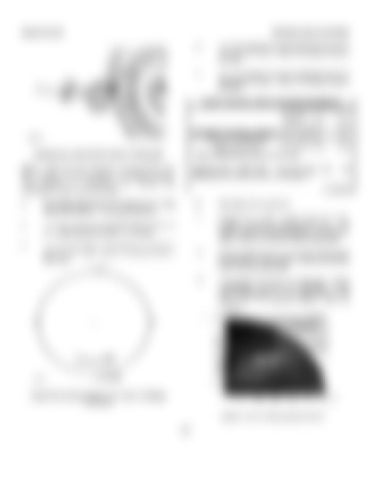BASIC BLOCK
TESTING AND ADJUSTING
NOTE: Write the dial indicator measurements with their positive (+) and negative (-) notation (signs). This notation is necessary for making the calculations in the chart correctly. Divide the measurement from Step 2 by 2. Write this number on line 1 in columns (B) & (D).
4.
Turn the crankshaft to put the dial indicator at (A). Adjust the dial indicator to "O" (zero).
5.
Turn the crankshaft counterclockwise to put the dial indicator at (B). Write the measurements in the chart.
Turn the crankshaft counterclockwise to put the dial indicator at (C). Write the measurement in the chart.
7.
Turn the crankshaft counterclockwise to put the dial indicator at (D). Write the measurement in the chart.
CHART FOR DIAL INDICATOR MEASUREMENTS Position of dial indicator Line No. A B C D Correction for bearing clearance I 0 Dial Indicator Reading II 0 Total of Line 1 & 2 III 0 •• • •• *Total Vertical eccentricity (out of round).
8S2328 DIAL INDICATOR GROUP INSTALLED
3.
6.
**Subtract the smaller No. from the larger No. difference is the total horizontal eccentricity.
The
A10234X5 8.
Add lines I & II by columns.
9.
Subtract the smaller number from the larger number in line III in columns (B) & (D). The result is the horizontal eccentricity (out of round). Line III, column (C) is the vertical eccentricity.
10.
On the graph for total eccentricity, find the point of intersection of the lines for vertical eccentricity and horizontal eccentricity.
11.
If the point of intersection is in the range marked "Acceptable", the bore is in alignment. If the point of intersection is in the range marked "Not Acceptable", the flywheel housing must be changed.
CHECKING BORE RUNOUT OF THE FLYWHEEL HOUSING GRAPH FOR TOTAL ECCENTRICITY 147

























































































